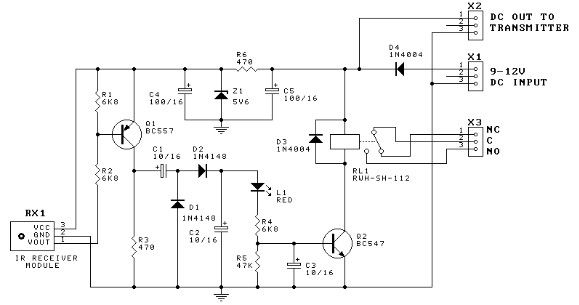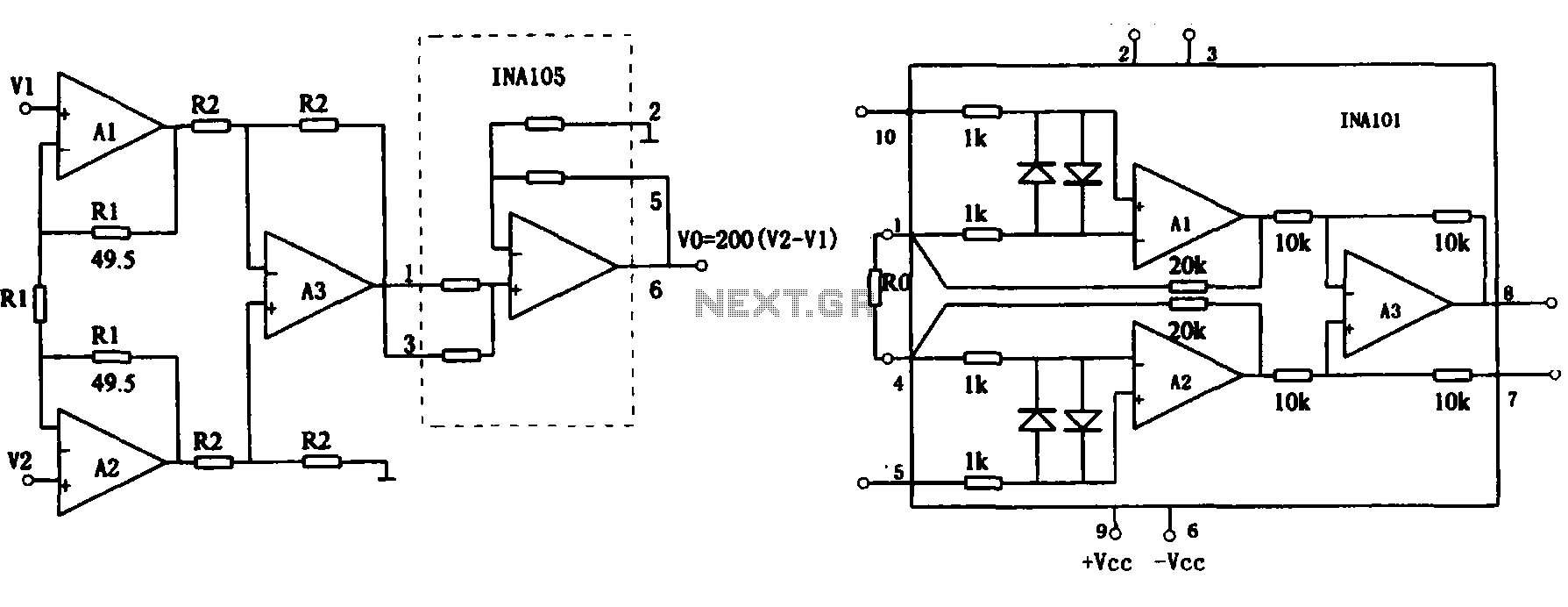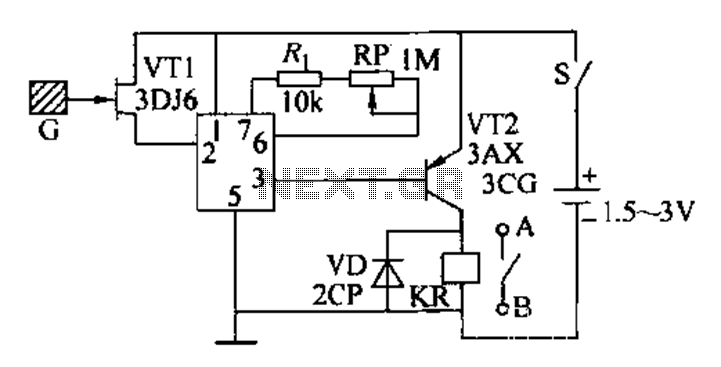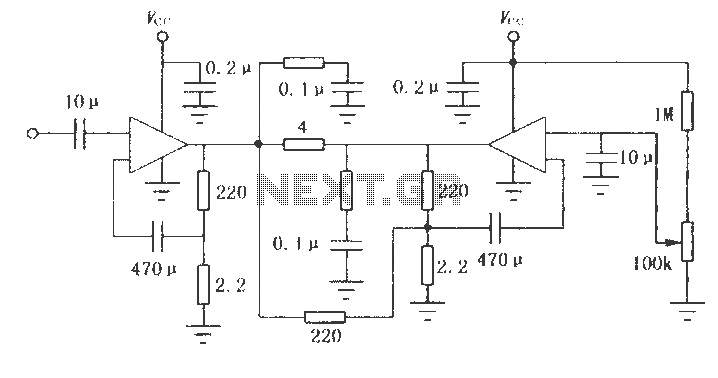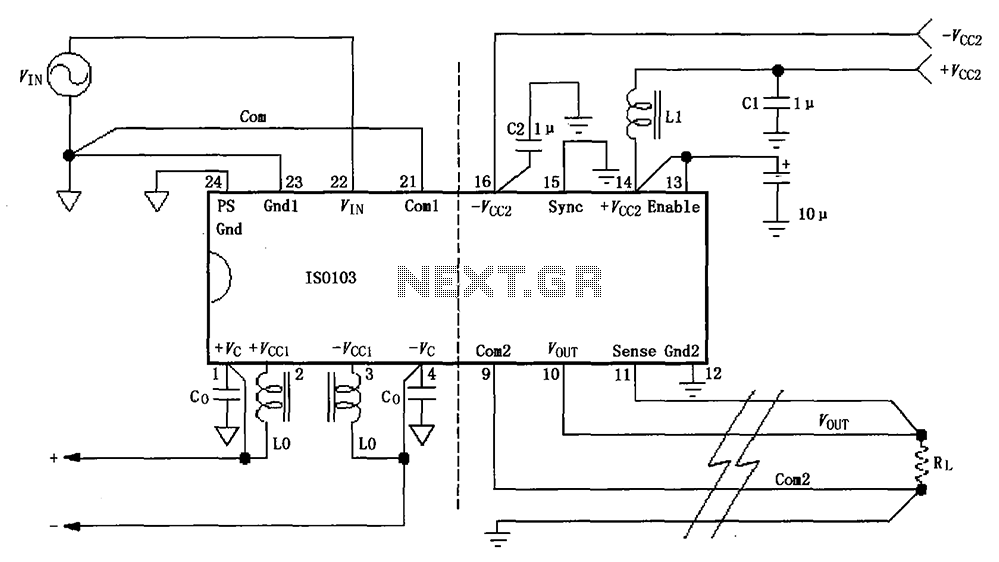
Protection For Telephone Line Circuit
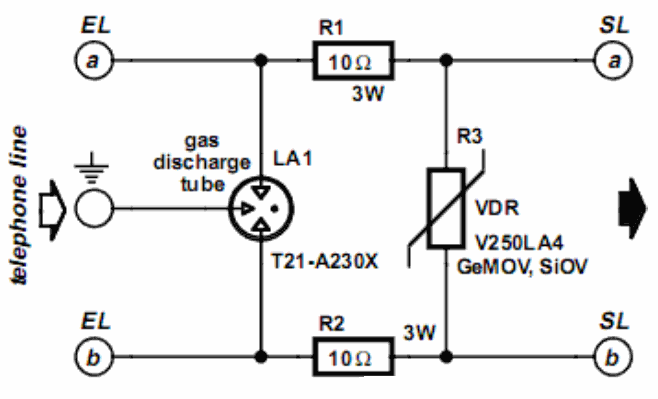
A long time ago, when telephones were simple and reliable from an electrical standpoint, telecom operators installed surge protection on all telephone lines at risk from storms. Paradoxically, as modern technology has led to the use of delicate and expensive equipment such as electronic telephones, fax machines, and ADSL modems, this protection has largely been removed. For those living in rural areas served by overhead telephone lines, there is a significant risk of high voltages induced on these lines during thunderstorms. Many modems, fax machines, and telephones have been destroyed by lightning strikes, yet a relatively small investment can provide efficient protection devices. During thunderstorms, lightning can induce transient voltages of several thousand volts on telephone lines. Unlike the high voltage sections of televisions or electric fences, which typically carry minimal current, lightning strikes can generate current surges of thousands of amps. Traditional components are often insufficient to handle these destructive pulses.
The proposed protection device utilizes a gas-filled spark gap, which consists of three electrodes insulated from one another within an airtight cylinder filled with rare gas. While the voltage between the electrodes remains below a specified threshold, the spark gap remains passive and presents an impedance of several hundred megohms. However, once the voltage exceeds this threshold, the gas is rapidly ionized, transforming the spark gap into a conductor capable of absorbing immense currents without damage. The spark gap described can withstand a standardized pulse of 5,000 amps lasting 8/20 milliseconds. The design incorporates a three-electrode spark gap, ensuring that the voltage between the telephone line wires or any wire and ground does not exceed approximately 250 volts.
To enhance the protection, a second security device is included, utilizing a voltage-dependent resistor (VDR), such as a GeMOV or SiOV, depending on the manufacturer. This component further limits the voltage between line wires to a maximum of 250 volts. Although this voltage may seem high, it is essential to note that all authorized telephone equipment bearing the CE mark is required to withstand such conditions without damage. However, some low-end devices, particularly those manufactured in China, may not meet this standard.
Given that lightning-generated pulses are brief, it is critical for the ground connection of this assembly to have low inductance. Therefore, the ground connection must be kept short and constructed from heavy-duty wire, with a minimum cross-sectional area of 1.5 mm². If the ground connection is not adequately designed, the inductance can block the high-frequency signal of the pulse, significantly reducing the effectiveness of the protection device. It is also important to note that this device does not interfere with the low-frequency signals used by telephones and fax machines, nor does it disrupt ADSL signals.A long time ago when telephones were so simple almost nothing could go amiss from an electrical point of view, Telecom operators installed surge protection on all telephone lines exposed to storm risks. Paradoxically, now that we are hooking up delicate and expensive equipment such as telephones filled with electronics, fax machines, (A)DSL modems
, etc. , this protection has disappeared. However, if you have the good fortune to live in the countryside in a building served by overhead telephone lines, there`s an obvious risk of very high voltages being induced on the lines during thunderstorms. While we have lost count today of all of the modems, fax machines and other telephones that have been destroyed by a bolt of lightning`, surprisingly you only have to invest a few pounds to get a remarkably efficient protection device like the one we are proposing here.
During a storm, often with lightning striking near a telephone line, the line carries transient voltages up to several thousands of volts. Contrary to the HV section of television sets or electrical fences, on which practically no current is running, in the case of lighting striking current surges of thousand of amps are not uncommon.
To protect oneself from such destructive pulses, traditional components are not powerful or fast enough. As you can see on our drawing, a (gas-filled) spark gap should be used. Such a component contains three electrodes, insulated from each other, in an airtight cylinder filled with rare gas.
As long as the voltage present between the electrodes is below a certain threshold, the spark gap remains perfectly passive and presents an impedance of several hundreds of MW. On the other hand, when the voltage rises above this threshold, the gas is very rapidly ionized and the spark-gap suddenly becomes a full conductor to the point of being able to absorb colossal currents without being destroyed.
The one we are using here, whose size is of the same magnitude as an ordinary one watt resistor, can absorb a standardized 5, 000 amps pulse lasting 8/20 ms! Since we are utilizing a three-electrode spark gap, the voltage between the two wires of the line or between any wire and ground, cannot exceed the sparking voltage, which is about 250 volts here.
Such protection could theoretically suffice but we preferred to add a second security device made with a VDR (GeMOV or SiOV depending on the manufacturer), which also limits the voltage between line wires to a maximum of 250 volts. Even if this value seems high to you, we should remember that all of the authorized telephone equipment, carrying the CE mark must be able to withstand it without damage.
This is not always the case however with some low-end devices made in China, but that`s an entirely different problem. Since pulses generated by lightning are very brief, the ground connection of our assembly must be as low-inductance as possible.
It must therefore be short, and composed of heavy-duty wire (1. 5 mm2 c. s. a. is the minimum). If not, the coil, composed of the ground connection, blocks the high frequency signal that constitutes the pulse and reduces the assembly`s effectiveness to nothing. Finally, please note that this device obviously has no effect on the low frequency signals of telephones and fax machines and it does not disturb (A)DSL signals either.
🔗 External reference
The proposed protection device utilizes a gas-filled spark gap, which consists of three electrodes insulated from one another within an airtight cylinder filled with rare gas. While the voltage between the electrodes remains below a specified threshold, the spark gap remains passive and presents an impedance of several hundred megohms. However, once the voltage exceeds this threshold, the gas is rapidly ionized, transforming the spark gap into a conductor capable of absorbing immense currents without damage. The spark gap described can withstand a standardized pulse of 5,000 amps lasting 8/20 milliseconds. The design incorporates a three-electrode spark gap, ensuring that the voltage between the telephone line wires or any wire and ground does not exceed approximately 250 volts.
To enhance the protection, a second security device is included, utilizing a voltage-dependent resistor (VDR), such as a GeMOV or SiOV, depending on the manufacturer. This component further limits the voltage between line wires to a maximum of 250 volts. Although this voltage may seem high, it is essential to note that all authorized telephone equipment bearing the CE mark is required to withstand such conditions without damage. However, some low-end devices, particularly those manufactured in China, may not meet this standard.
Given that lightning-generated pulses are brief, it is critical for the ground connection of this assembly to have low inductance. Therefore, the ground connection must be kept short and constructed from heavy-duty wire, with a minimum cross-sectional area of 1.5 mm². If the ground connection is not adequately designed, the inductance can block the high-frequency signal of the pulse, significantly reducing the effectiveness of the protection device. It is also important to note that this device does not interfere with the low-frequency signals used by telephones and fax machines, nor does it disrupt ADSL signals.A long time ago when telephones were so simple almost nothing could go amiss from an electrical point of view, Telecom operators installed surge protection on all telephone lines exposed to storm risks. Paradoxically, now that we are hooking up delicate and expensive equipment such as telephones filled with electronics, fax machines, (A)DSL modems
, etc. , this protection has disappeared. However, if you have the good fortune to live in the countryside in a building served by overhead telephone lines, there`s an obvious risk of very high voltages being induced on the lines during thunderstorms. While we have lost count today of all of the modems, fax machines and other telephones that have been destroyed by a bolt of lightning`, surprisingly you only have to invest a few pounds to get a remarkably efficient protection device like the one we are proposing here.
During a storm, often with lightning striking near a telephone line, the line carries transient voltages up to several thousands of volts. Contrary to the HV section of television sets or electrical fences, on which practically no current is running, in the case of lighting striking current surges of thousand of amps are not uncommon.
To protect oneself from such destructive pulses, traditional components are not powerful or fast enough. As you can see on our drawing, a (gas-filled) spark gap should be used. Such a component contains three electrodes, insulated from each other, in an airtight cylinder filled with rare gas.
As long as the voltage present between the electrodes is below a certain threshold, the spark gap remains perfectly passive and presents an impedance of several hundreds of MW. On the other hand, when the voltage rises above this threshold, the gas is very rapidly ionized and the spark-gap suddenly becomes a full conductor to the point of being able to absorb colossal currents without being destroyed.
The one we are using here, whose size is of the same magnitude as an ordinary one watt resistor, can absorb a standardized 5, 000 amps pulse lasting 8/20 ms! Since we are utilizing a three-electrode spark gap, the voltage between the two wires of the line or between any wire and ground, cannot exceed the sparking voltage, which is about 250 volts here.
Such protection could theoretically suffice but we preferred to add a second security device made with a VDR (GeMOV or SiOV depending on the manufacturer), which also limits the voltage between line wires to a maximum of 250 volts. Even if this value seems high to you, we should remember that all of the authorized telephone equipment, carrying the CE mark must be able to withstand it without damage.
This is not always the case however with some low-end devices made in China, but that`s an entirely different problem. Since pulses generated by lightning are very brief, the ground connection of our assembly must be as low-inductance as possible.
It must therefore be short, and composed of heavy-duty wire (1. 5 mm2 c. s. a. is the minimum). If not, the coil, composed of the ground connection, blocks the high frequency signal that constitutes the pulse and reduces the assembly`s effectiveness to nothing. Finally, please note that this device obviously has no effect on the low frequency signals of telephones and fax machines and it does not disturb (A)DSL signals either.
🔗 External reference
